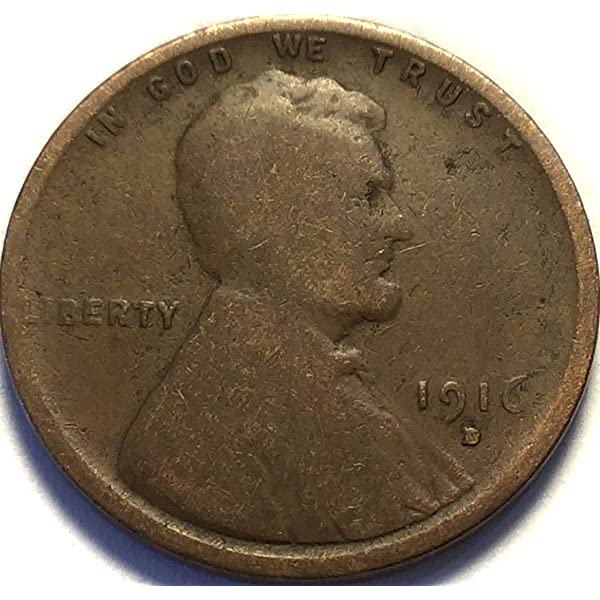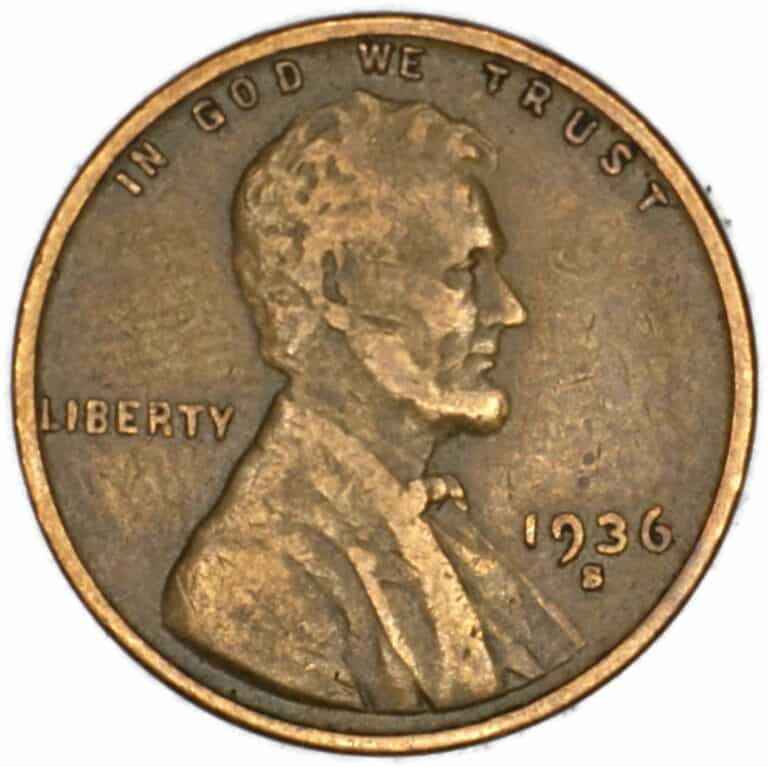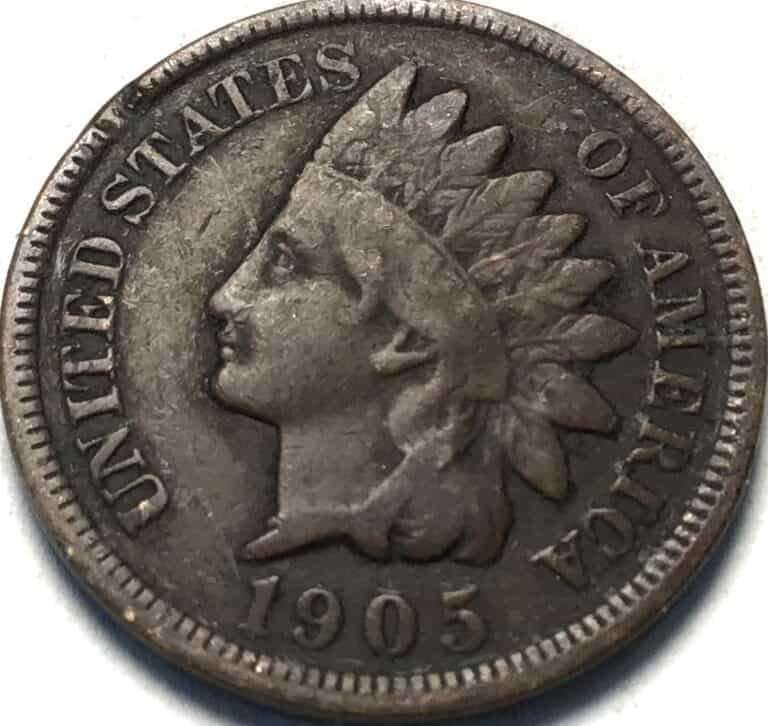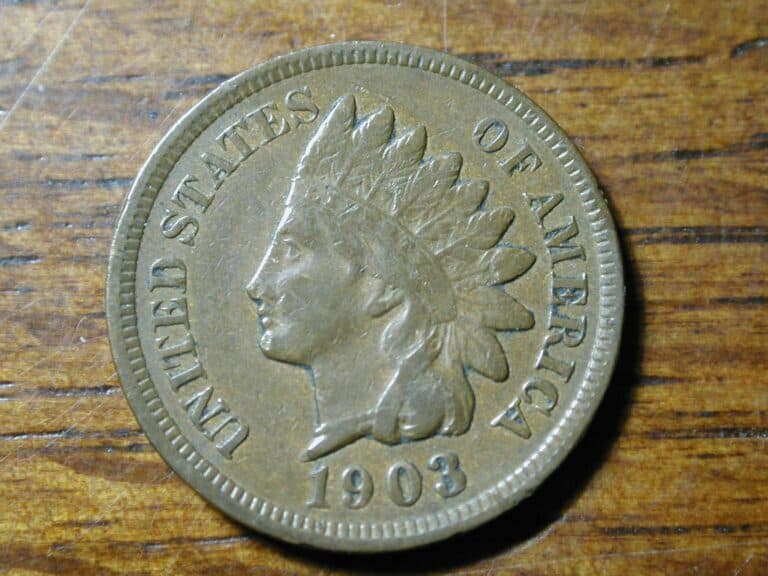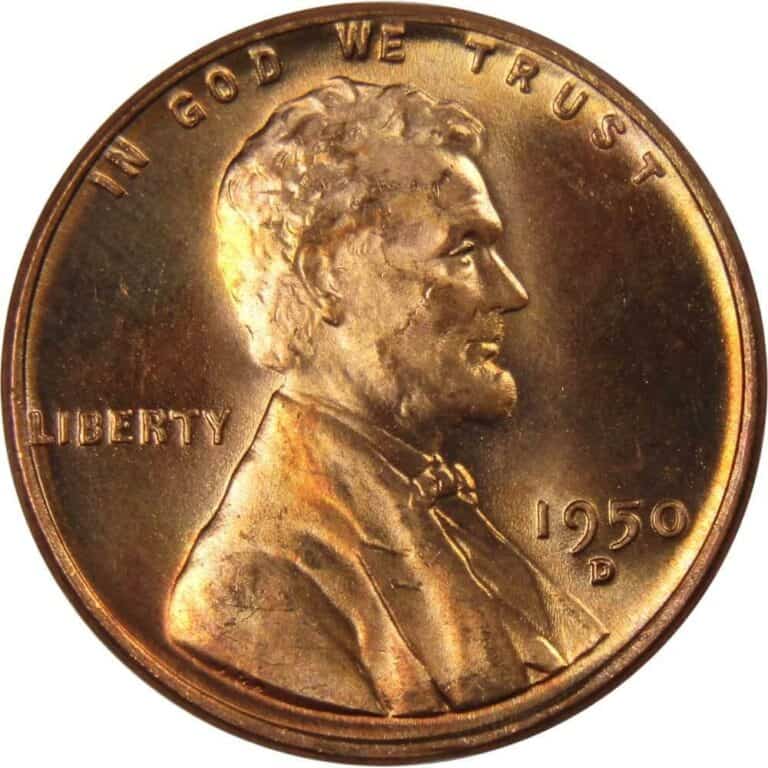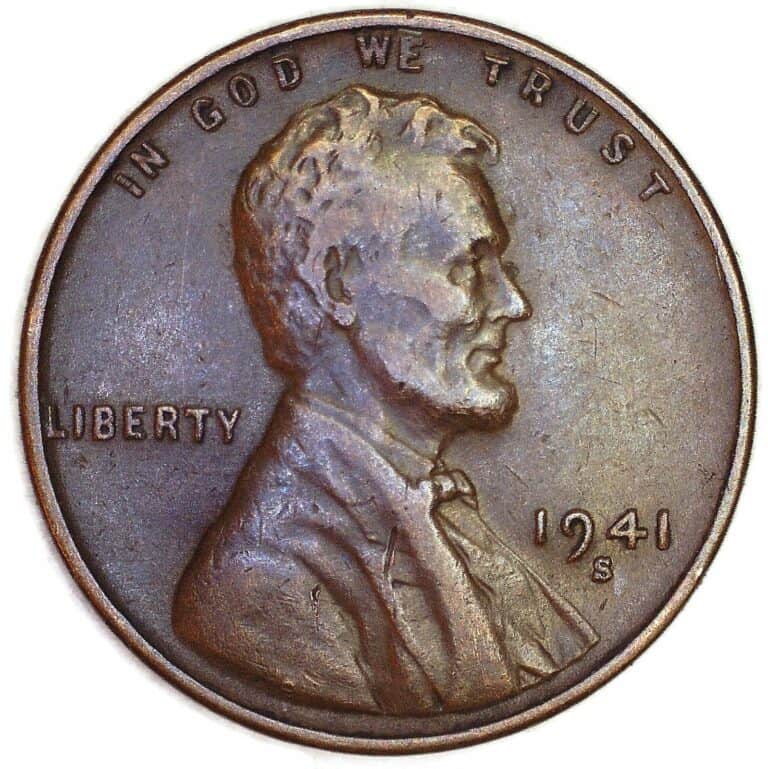1900 Indian Head Penny Value: How Much Is It Worth Today?
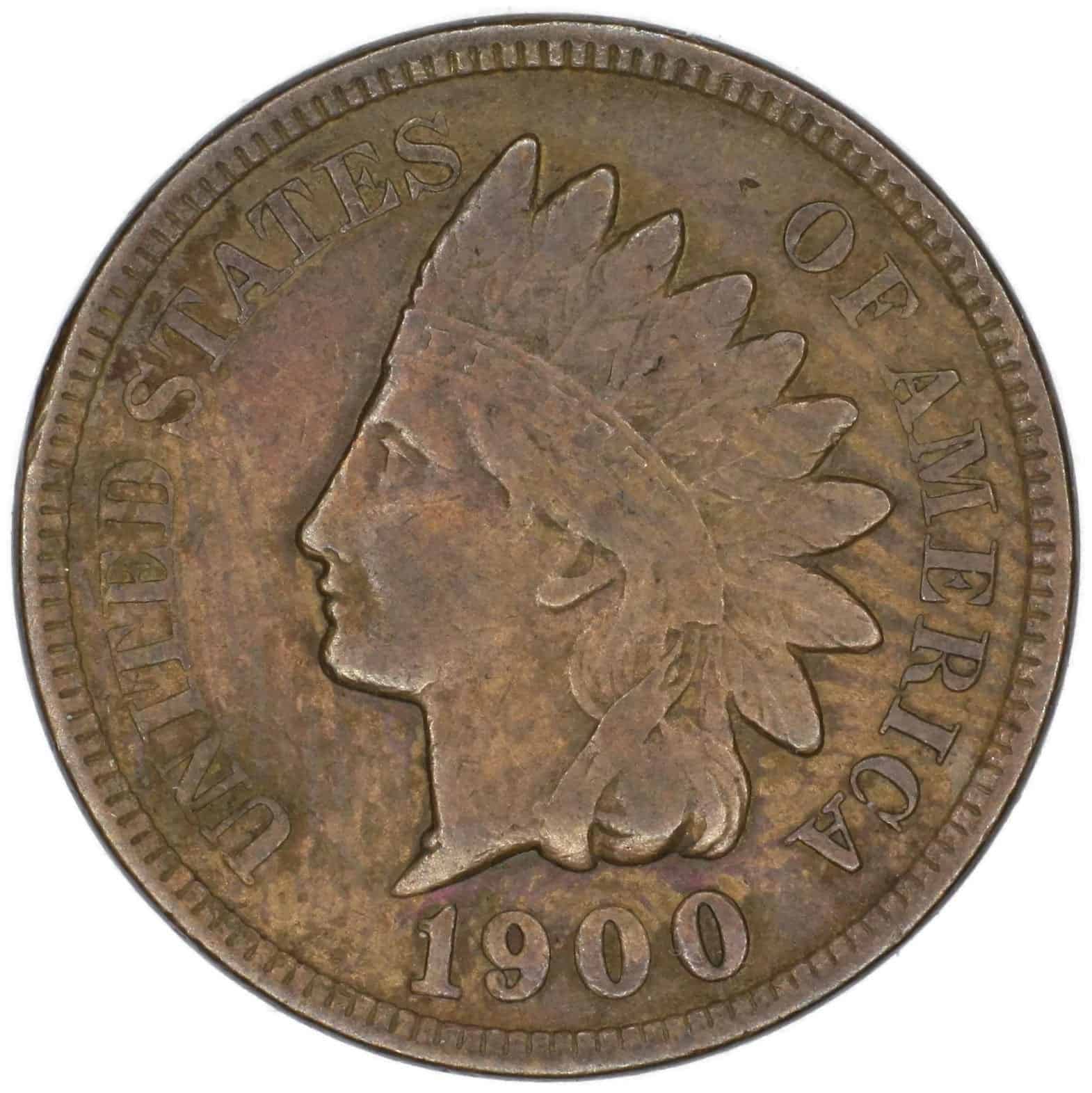
If you own a 1900 Indian Head penny, you might wonder how valuable it could be after all these coins are over 120 years old. While many pennies from 1900 are worth at least a little over their face value, age doesn’t necessarily mean they are worth significant amounts. So how is the value of 1900 Indian Head pennies determined?
Many factors influence a coin’s value, such as its condition, rarity, and historical significance. In this article, you will find a list of estimated values of 1900 Indian Head pennies, together with historical details and information on how coins such as the 1900 penny are graded.
1900 Indian Head Penny Value Chart |
|||||
| Mint Mark | Very Good VG8 | Extra Fine
EF40 |
Uncirculated MS61 | Uncirculated MS65 | Uncirculated MS67 |
| 1900 No Mint Mark BN Indian Head Penny Value | $1.50 – $1.85 | $5 – $12 | $35 – $45 | $125 – $155 | – |
| 1900 No Mint Mark RB Indian Head Penny Value | – | – | $50 – $63 | $225 – $282 | – |
| 1900 No Mint Mark RD Indian Head Penny Value | – | – | $80 – $100 | $565 – $660 | $4,200 – $6,255 |
The Indian Head penny, also known as the Indian Head cent, was first minted in 1859. The last Indian Head pennies were produced by the US Mint until they were replaced by the Lincoln pennies in 1909.
The coin was initially met with controversy because of the design on the obverse. Some people felt it was disrespectful or inaccurate to dress Lady Liberty in a traditional Native Indian headdress. However, the coin gained more popularity over the years and is now considered one of the classic American coins.
For the first five years, the composition used in the Indian Head pennies contained 88% copper and 12% nickel. The composition was changed in 1964 in Philadelphia to 95% copper and the rest was a mix of tin and zinc. It was this mixture that became standard in US pennies and was used in the 1900 penny as well.
At the same time, when the composition was changed, the coin’s weight changed, too. It was reduced from the original weight of 4.67 grams to 3.11 grams. This was the only time the coin was changed during its time in production.
1900 No Mint Mark Indian Head Penny Value
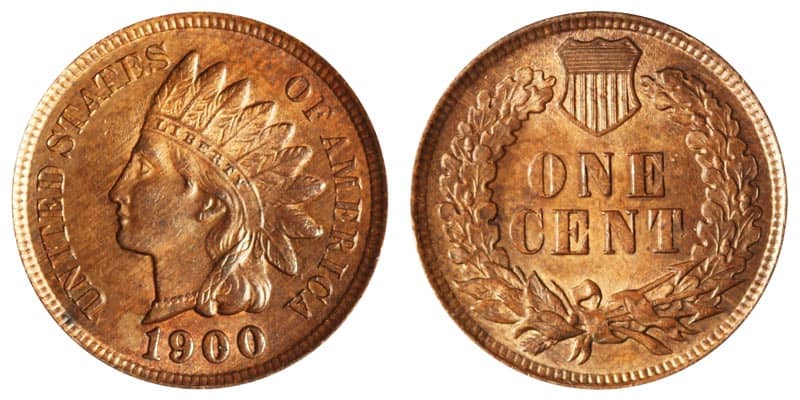
In 1900, Indian Head pennies were only produced at one US Mint facility, which was the Philadelphia Mint. Therefore no pennies from 1900 have mint marks. There were 66,831,502 Indian Head pennies minted in Philadelphia.
Because so many pennies were released into circulation in 1900, they are fairly inexpensive, especially when found in lower grades, despite their age. You can purchase a 1900 Indian Head penny graded good for less than $2 and for an extra fine specimen, you would usually need to pay around $12.
Mint state BN 1900 Indian Head pennies sell upwards from $33 for MS60 graded coins to $155 for MS65 graded coins. Coins that are graded RD are noticeably the most valuable with MS66 and MS67 graded pennies worth between $1,300 and $6,250.
Auction Record for a 1900 Indian Head Penny
However, the auction record for a 1900 Indian Head penny is almost more than four times the highest valuation. This can happen with desirable coins when several collectors want the same coin.
The record is very recent, from 2021 and it was achieved with a 1900 penny sold at Legend Rare Coin Auctions. It was graded as MS67+RD by the Professional Coin Grading Service (PCGS) and sold for $28,200.
If you are unfamiliar with the grading system used for coins, you will find an explanation of it later in the article.
The Obverse Design of the 1900 Indian Head Penny
The obverse, which most people call heads, of the 1900 Indian Head penny features the profile of Lady Liberty wearing a traditional Native American feather headdress with the word “LIBERTY” inscribed on the band. The use of Lady Liberty caused some controversy when the coin was first released.
The minting date of 1900 is below the profile. The words UNITED STATES curve along the rim in front of the profile and the words OF AMERICA are behind the profile.
The Reverse Design of the 1900 Indian Head Penny
The reverse, known by most people as the tail side of a coin, features a wreath that is made of oak leaves and tied with a ribbon at the bottom. The denomination ONE CENT is at the center of the coin, surrounded by the wreath.
Between the end of the wreath, on top of the coin is a shield with six vertical and seven horizontal stripes to represent the thirteen original states. The reverse also features arrows that are tied to the wreath with the ribbon. The arrows are symbolic of the country being ready to defend itself against enemies.
Additional Features of the 1900 Indian Head Penny
The 1900 Indian Head pennies were made with a metal alloy containing 95% of copper and 5% of tin and zinc. It was the standard composition for pennies at the time.
The Indian Head penny has a diameter of 19.05 millimeters. It is 1 millimeter thick and weighs 3.11 grams. The coin has a plain edge, but there are small dots, known as denticles along the rim on both sides of the coin. This was an early attempt to stop fraud since it made cutting the coin’s edge impossible.
The Indian Head Penny was designed by James B. Longacre. He was the US Mint Chief Engraved from 1844 until he died in 1869. Longacre also designed many other US coins of the time, including the Liberty Head double eagle and the Shield nickel.
1900 Indian Head Penny Proof Coins
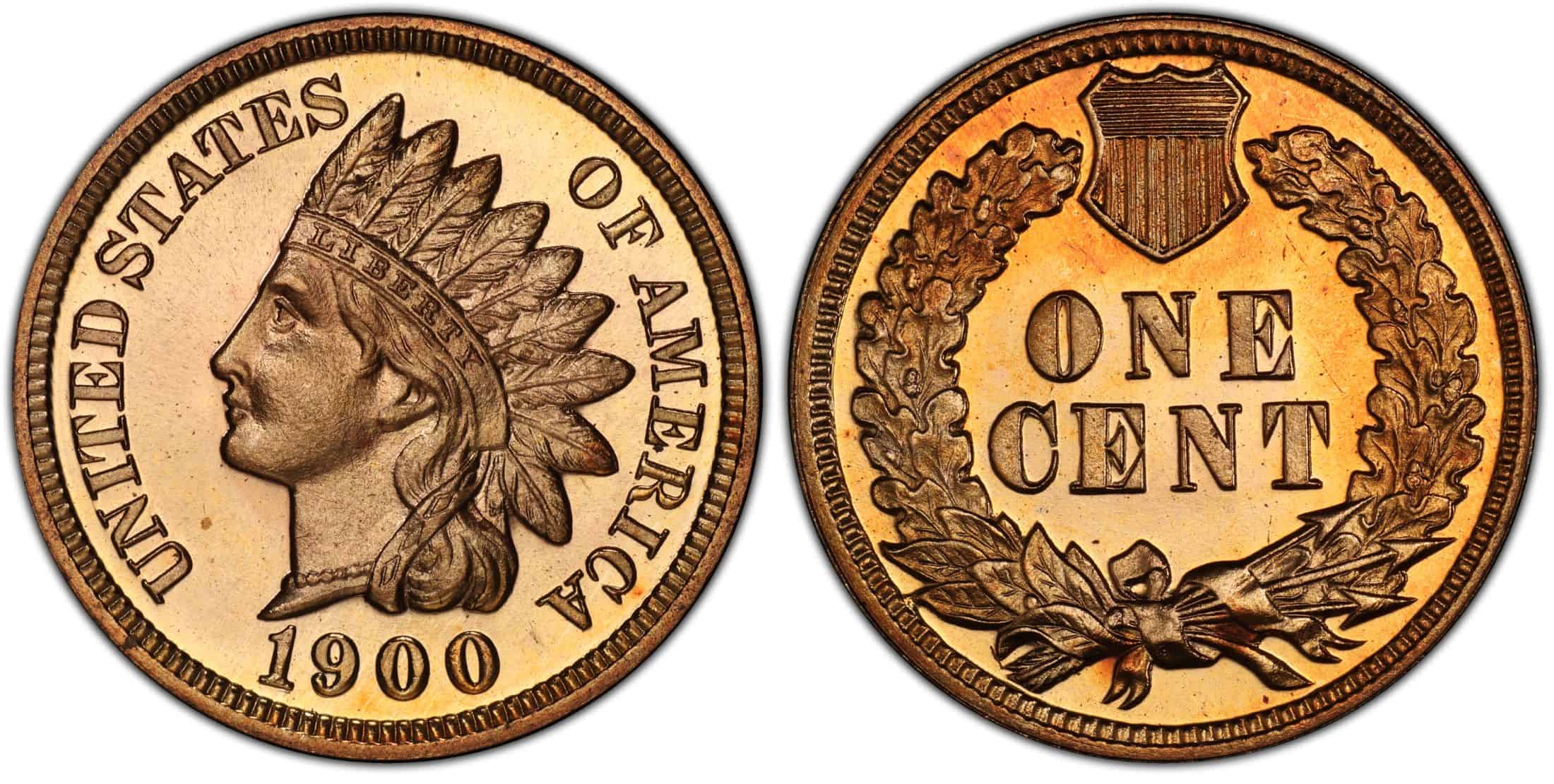
The Philadelphia Mint was responsible for minting proof coins as well as the regular strike coins in 1900. The facility minted just 2,262 proof coins, which were produced in three different tones.
The coins with different coins have different valuations with red-toned coins commanding the highest prices. While brown-toned 1900-proof pennies are worth between $110 and $1,980 and red-brown coins between $135 and $2,400, red-toned pennies are valued from $200 to $4,800.
Just like with the regular strike 1900 penny, the auction record for the proof penny is also much higher than the standard valuations. The record is from a Stack’s Bowers auction in 2019 when a PCGS graded a proof coin as PR67CAM and it sold for $28,800.
1900 Indian Head Penny Grading
Indian Head pennies are graded on a scale known as the Sheldon scale using numbers 1 to 70 where 70 represents the perfect coin. When coins are graded by professional coin grading companies, they give the coin a number from this scale together with a letter.
The poorest condition coins are graded PO1 (poor). Some other letter combinations include VG for very good, EF for extra fine, AU for about uncirculated, and MS for the mint state. For example, a coin in very good condition may be graded VG8, about uncirculated AU56, and a mint state coin as MS65.
For more information on grading Indian Head pennies and a visual example of different grades, watch this video from Coin Study.
Proof Penny Grading
The Sheldon scale is often used for grading proof pennies, too. A proof penny in PR70 condition would be considered perfect with no flaws, while a coin in PR1 condition would be severely damaged or worn.
However, it is important to note that proof coins are generally presented in better condition than regular-strike coins since they were bought by collectors and were not intended for circulation. Therefore it is rare to find proof coins graded lower than PR60 which corresponds with the lowest grade for uncirculated regular strike coins.
Meaning of RD, RB, and BN
You will have noticed the use of the letter combinations RD; RB, and BN on the value chart for the 1900 Indian Head penny. These are used to describe the color condition of the coins and particularly for Indian Head pennies and Lincoln pennies, which were made of copper and often exhibit a range of colorations due to age and exposure.
RD stands for Red, and it is used to describe copper coins that have retained a bright, coppery-red color. This term is usually applied to uncirculated or mint-state coins that still have their original color and luster. For a coin to receive RD description its surface has to be at least 95% red.
The BN is used for coins that are at least 95% brown. When copper coins are exposed to oxygen, the red color changes to brown over time. In numismatic terms, brown coins are generally less desirable than RD or RB-described coins, which is reflected in the price.
The last letter combination RB means Red-Brown. It is used for coins that do not meet either of the above criteria and where the surface color is a mix of red and brown. While RB coins are valued higher than BN coins, they are usually less valuable than RD coins.
Rare 1900 Indian Head Penny Error Lists
1900 Indian Head Penny Gold Planchet Error
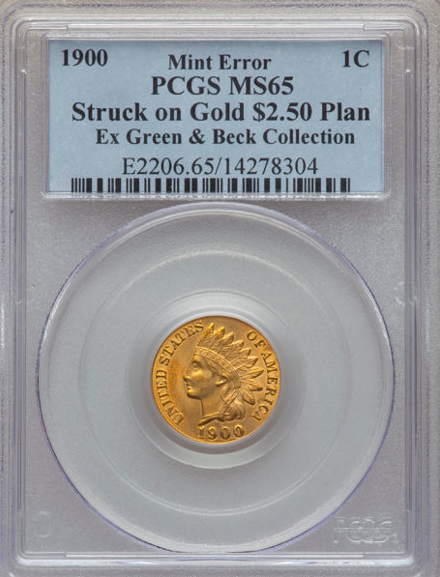
The most valuable error known on the 1900 Indian Head pennies is the gold planchet error. There are five known Indian Head pennies minted on gold planchets. Three of them are from 1900, one from 1905, and the last one from 1906.
Some people have said the planchets were entered into the machine by mistake. However, others argue it would be unlikely that professional minting staff would make such an error and that the coins were special-proof coins.
Whatever the real reason behind these rare pennies from 1900, they are incredibly valuable. Collectors may be prepared to spend hundreds of thousands on one of these rare specimens.
1900 Indian Head Penny Strike-Through Error
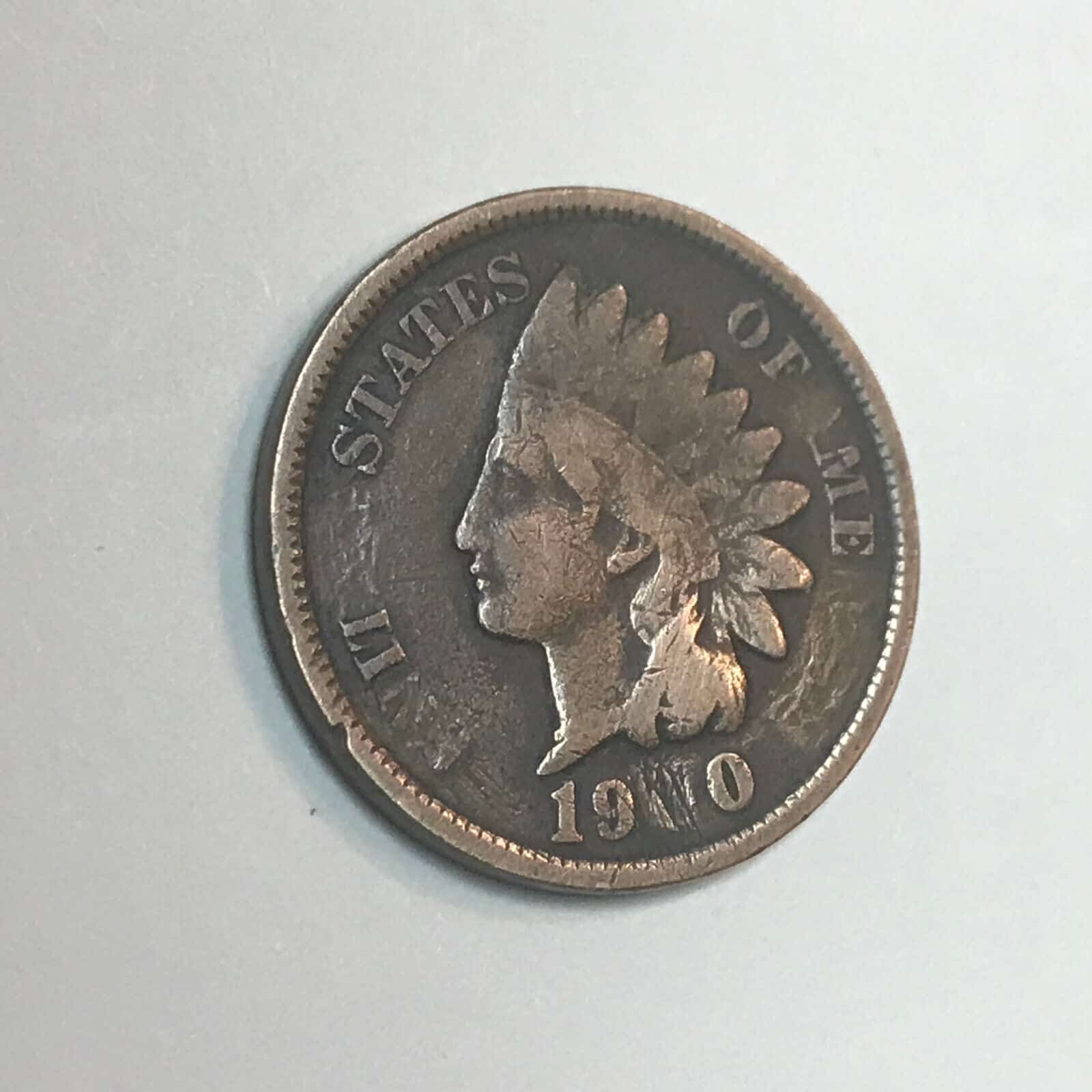
Stike-through errors occur when a foreign object becomes lodged in the die used to strike a coin. These foreign objects can range from, for example, a piece of wire, or a tiny rock, to even a small piece of debris.
This results in an impression on the coin’s surface, such as a missing part of a text or design. Generally, the more dramatic the strike-through error, the more valuable the coin will be. However, the exact value depends on the overall condition of the coin.
1900 Indian Head Penny Double-Strike Error
Sometimes, a coin can get stuck in the machine after the first strike and is then struck again with the same or a different die. The result is a coin that shows some of the design elements or features struck twice, appearing slightly doubled or overlapping.
These are not common errors on Indian Head pennies from any mint year. When they have been spotted, it has most commonly been on the word liberty, which is inscribed on the headdress on the obverse of the coin.
1900 Indian Head Penny Off-Center Error
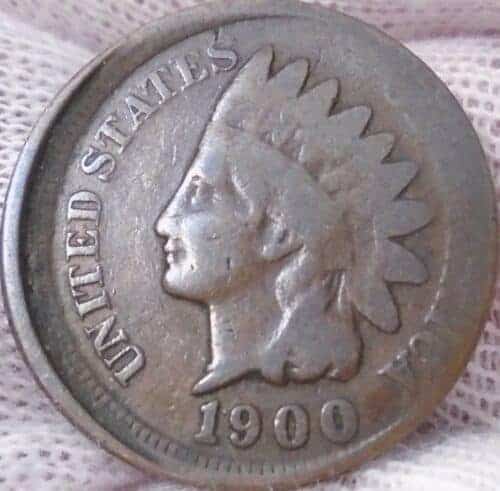
These errors occur when the coin is not struck in the center of the blank, resulting in an off-center design. The error can be very minimal with the design at just 1% off-center or very drastic at 99%. The most desirable off-center error coins usually have 50% off-centering and still show the date clearly.
1900 Indian Head Penny Frequently Asked Questions
How much is a 1900 Indian Head penny worth today?
The value of the 1900 Indian Head penny varies from around $1.50 to several thousand depending on its condition. While coins from 1900 are still common in circulated conditions, they are quite rare in uncirculated, mint-state conditions. They will receive the highest valuations from coin graders.
Which Indian Head pennies are valuable?
These are the three most valuable Indian Head pennies:
- The 1877 Indian Head penny is one of the most valuable Indian Head pennies because of its low mintage of 852,500.
- 1909 S Indian Head penny with a mintage of just 309,000.
- 1908 S Indian Head penny is scarce, especially in higher grades.
